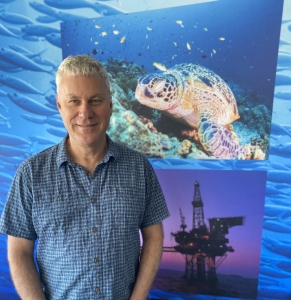Introducing the Cockburn Sound Science Program Manager
Cockburn Sound Science Program Manager Dr Alan Kendrick is leading the research study to fill knowledge gaps, investigate potential impacts and improve understanding of Cockburn Sound’s ecosystem.
Involvement in large, science-based marine environmental programs has always piqued Alan’s career interests.

In his previous role he oversaw marine conservation science at the Department of Biodiversity, Conservation and Attractions, managing large marine research programs associated with offset funding from the Wheatstone, Pluto and Gorgon gas developments.
During this time, he was also involved with the delivery of WAMSI’s Ningaloo and Kimberley Marine Research Programs.
Alan will now manage a huge collaboration of research effort that will inform environmental assessment of the State’s new container port.
The WAMSI Westport Marine Science Program is a three-year program that will see local scientists deliver about 30 ecological and social research projects designed to support environmental assessment of the new port and the future management of Cockburn Sound.
Alan is looking forward to the challenge of managing the science program and developing knowledge that will help to protect Cockburn Sound’s unique marine environment.
“As the biggest collaborative investigation into the ecosystems of Cockburn Sound that has ever been undertaken, the science program is an incredible venture that will fill important knowledge gaps and deliver the information needed to manage this environment now and into the future,” he said.
Alan hopes the research outcomes resulting from the program will pave the way for future strategic science collaborations across the State.
“The science program is a great example of local scientists carrying out research in our own backyard.”
“It showcases how industry, government and the wider community can access WAMSI’s rich expertise in marine science to inform the sustainable development of how big WA projects are implemented.”
